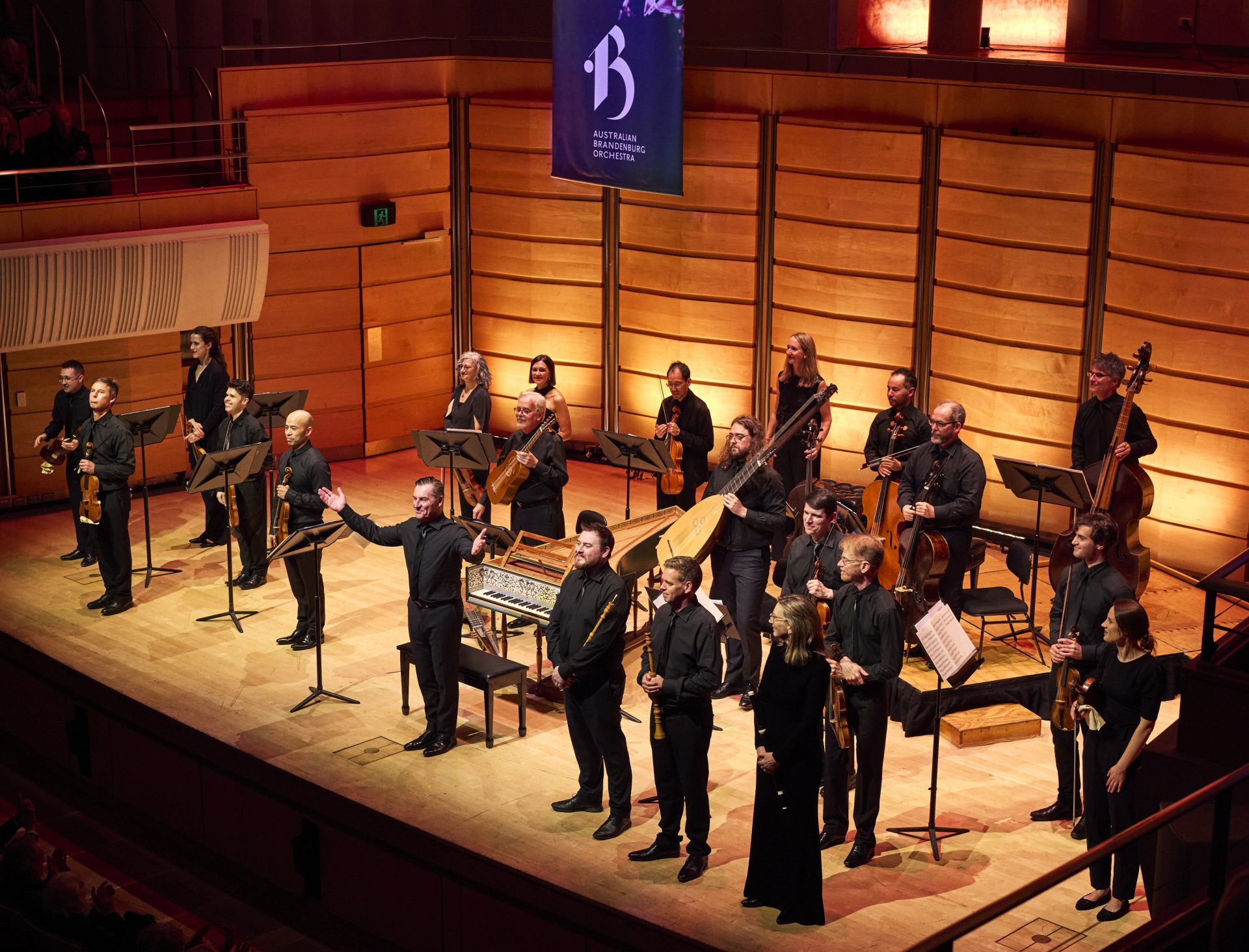There is nothing mediocre about an ABO concert. This orchestra specialises in extremities, variety and sheer fun.
Paul Dyer began, with characteristic energy, directing the ABO from the harpsichord in an exhilarating rendition of the opening Sinfonia to Vivaldi’s Il Giustino. Like the opening to his Great Moghul, Vivaldi gives a prominent role to a persistent bass. The percussive effect even extended to the Baroque guitar, played by Nicholas Pollock. There was incredible dynamic control throughout the orchestra. The orchestra traverses the whole gamut of volumes in the space of the few opening bars.
Handel’s Violin concerto in D major (HWV 319) begins regally enough. It has a walking pace. Principal violinist Shaun Lee-Chen despatches a tasteful mini solo, and engages in a fun duet with Ben Dollman. The highlight was the second movement. It is as though the strings are split in two and pitted against each other. As Dyer reminded us in the opening, good things come in twos. The cellos rise step-wise, and that ascending, almost sighing, motif foreshadows the Viennese sighs and the stil galant that was to come. The third movement is a total change of scene. It has all the pathos of a lament. A motif evidently based on a jarring augmented fourth is layered in a way redolent of Lotti’s Crucifixus. The fourth movement has comes to a sudden halt. This is perfect material for Dyer, who gave it great dramatic effect.
Enter Melissa Farrow on Baroque flute for Telemann’s Concerto for flute and violin in E minor (TWV 52:e3). Lee-Chen engaged in an extended dialogue, with Lee-Chen again delivering some impassioned mini solos. The highlight was the Presto, in which he despatched fiendishly difficult passages at a feverish pace. The audience was astounded.
The second movement of Vivaldi’s Concerto for 2 violins in A minor from L’estro armónico is a languid passacaglia. It put Lee-Chen and Dollman on full display, as dramatis personae of an elaborate operatic duet for violins. That metaphor is apt because it is as though the parts were being sung. Lee-Chen improvised some tasteful embellishments.
After the interval came Handel again. His Concerto grosso in B-flat major, Op 6 No 7, HWV 325 begins with an intriguingly alliterative fugal subject. The dramatic effect of that repetition was brought out best by Dyer on continuo. In the second movement, Dyer has the orchestra let out a burst before the whispering closing cadence, which ends with something of a question mark. This was a fitting segue into the ‘Hornpipe’ movement, which had some jaunty phrases, alla rustica.
The last three were unique pieces. Albinoni was the master of the oboe concerto, so it was fitting that this was the time for the oboes to shine, especially in a duet in the second movement.
A concerto attributed to Pergolesi featured Farrow again on baroque flute, whose phrasing was very good. That is to say nothing of her stamina, as she uncomplainingly manoeuvred very difficult passages at a Dyer pace.
But the showstopper was the movement selected from Vivaldi’s Concerto for violin in D major RV 222. Lee-Chen again executed virtuosic passages at breakneck speed with perfection, and with a bird-like vibrato.
